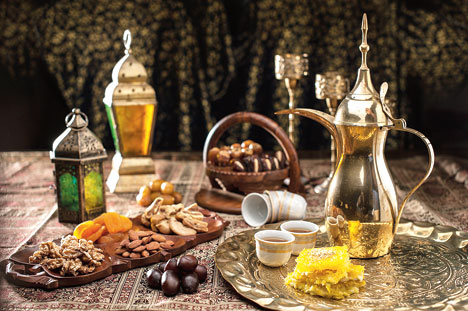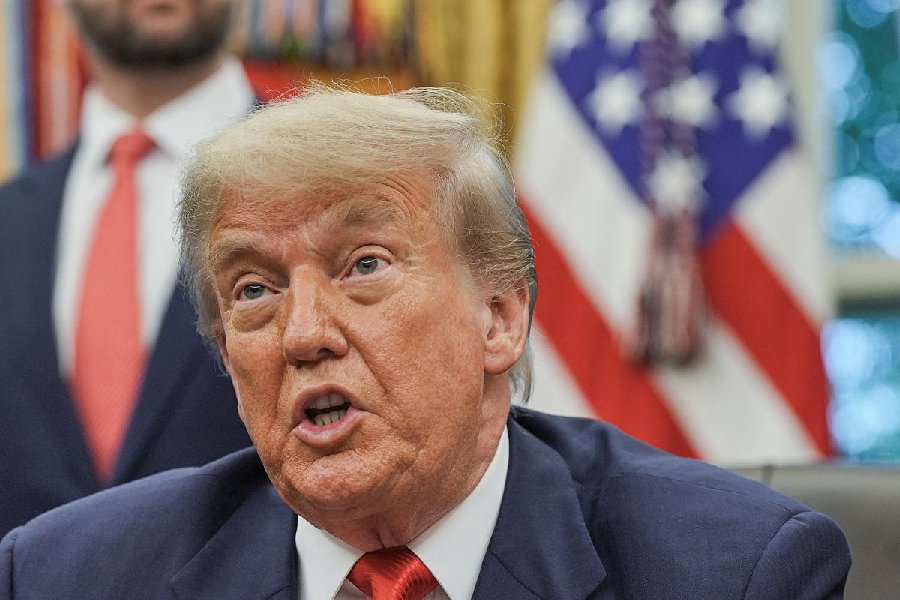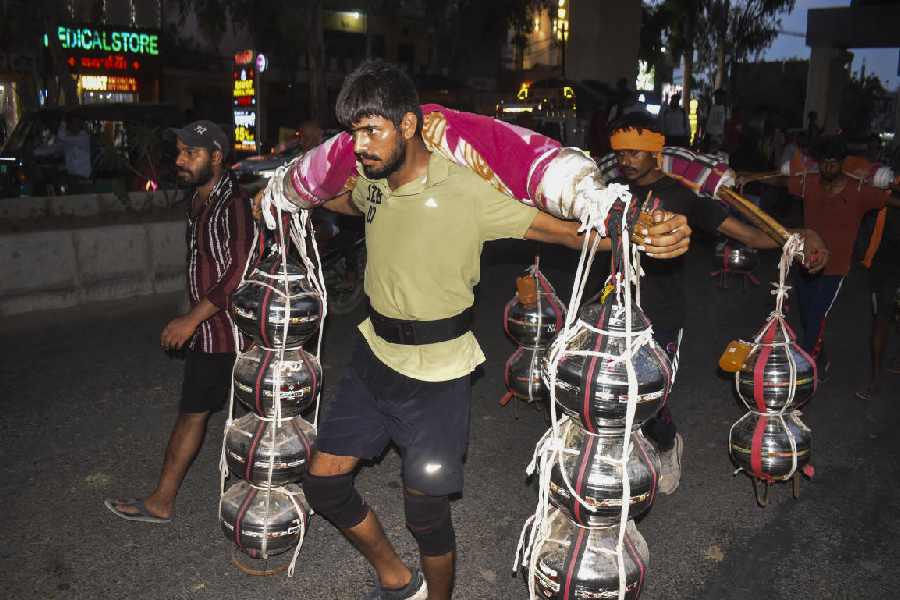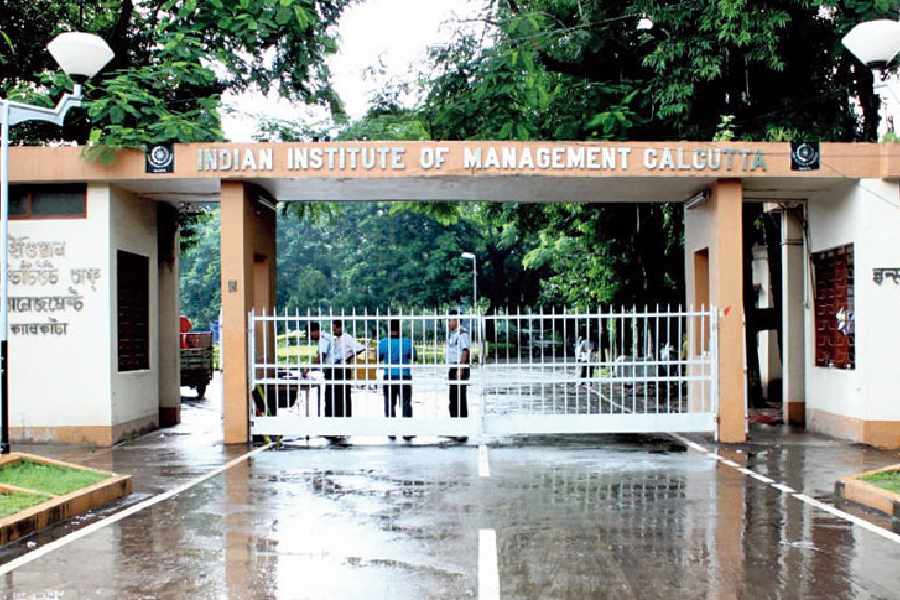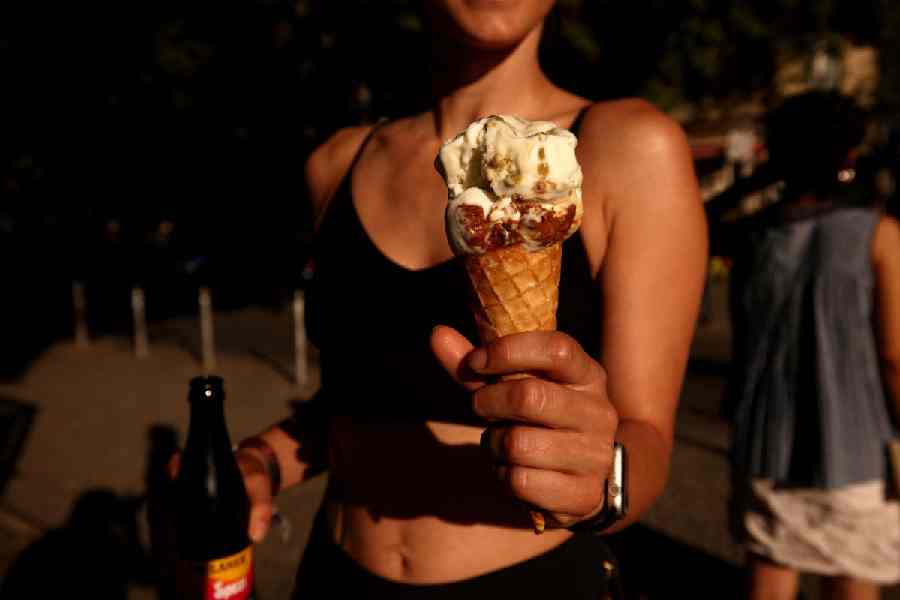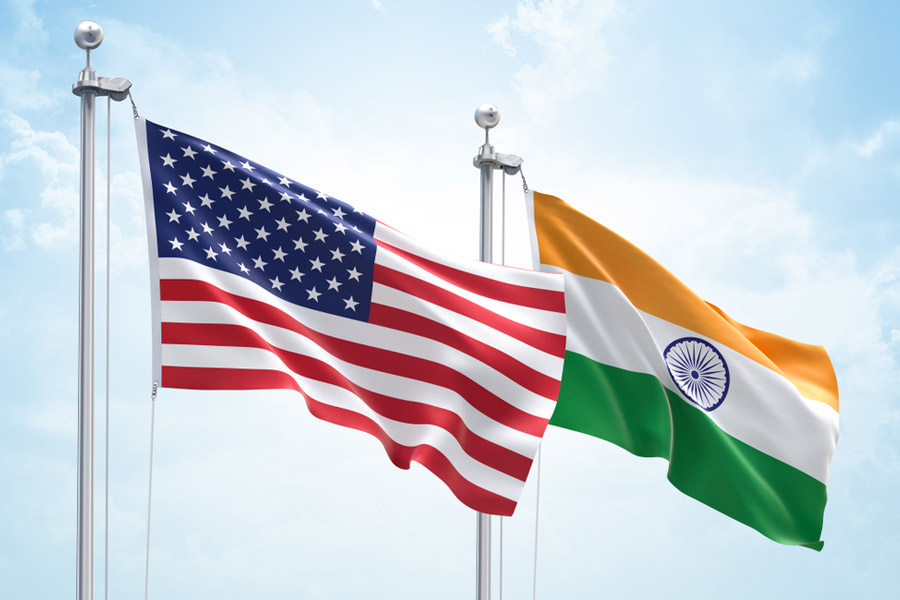
Have you heard the story of goats eating coffee cherries, which led to the discovery of coffee? I can tell you that, but only after a refill of my cup.
“I will keep pouring the coffee till you shake your cup, which would mean you have had enough,” said 22-year-old Mahmoud Bawardi, dressed in a spotless white Bedouin thobe, showing how coffee is served to a guest in an Emirati household.
It was a late afternoon in early March, the sun’s slanting rays lending a warm glow to the Al Bastakiya region of Bur Dubai that no Instagram filter could match.
The whiff of cinnamon sticks and rose petals wafting from the roadside stalls along the winding lanes had given way to a strong aroma of caffeine, and we knew we had arrived at the Coffee Museum.
Mahmoud, our guide for the day at the Coffee Museum, was holding a dallah, a traditional Arabic coffee pot made of brass, in his left hand and a number of senjas (little ceramic cups) in his right. He started explaining how coffee should be poured with respect. Guests are like God, and serving them coffee is a ritual. The one serving the coffee should not speak but keep pouring the coffee into the senjas silently, said Mahmoud. “There’s a significance of using the left and right hands. There’s a way to serve. When serving, one should always offer the senja to the guest with his right hand.”
Mahmoud paused often as we — a bunch of food writers from India, on a trip to experience Dubai Food Festival — hastily took notes, asked English spellings of Arabic names like mehmas (iron griddle to roast coffee beans) and minhas (coffee grinder) that have no English alternatives and hurled a battery of questions at our coffee guide, sitting in a cosy room called majlis — a traditional Arabic drawing room where guests are received and served coffee with dates. “We don’t use sugar. So dates are served to cut the bitterness of the coffee,” said Mahmoud.
In the next room, we were greeted by a smiling lady who meticulously prepared coffee in a jebena, a traditional Ethiopian clay pot with a long neck. The little cups were filled and we took our first sip. Piquant and slightly floral — the two notes I picked up from my first tasting of the brew from Ethiopia, the country where it all began centuries ago.
The story of the Ethiopian coffee-eating goat goes like this: Kaldi, a goatherd, noticed that his goats had suddenly started to prance around with way too much energy after nibbling cherries from a shrub. He shared his observation with the local abbots, who started consuming coffee beans to stay awake during night prayers. This is a known story. What none of us knew was that, for a long time, Ethiopians would chew the coffee beans!
Only when the beans were ferried across the Red Sea to Yemen by Muslim pilgrims were they roasted and brewed for the first time, said Mahmoud. That drink is now one of the most consumed beverages in the world after water.
Today, the daily consumption of coffee is 1,600 million cups a day worldwide. And around 125 million people depend on coffee for their livelihood!
“Do you know where the word Mocha coffee comes from?” continued Mahmoud. “It was from Yemen that coffee spread to the Islamic world in the Arabian peninsula, Egypt, Turkey and North Africa. All this shipment of coffee happened through the port of Mocha in Yemen. That’s how the coffee came to be known as Mocha.”
For the next two hours, Mahmoud walked us through the many rooms in the museum spread across two floors — the ground floor dedicated to the history of Arabic coffee and the floor above to world coffee — with a final stop at the museum’s cafe where the barista works his magic and serves you the brew of your choice. There’s quite a variety on offer — coffee from almost all the coffee-producing nations in the world are stocked up in vacuum-sealed jars here — think Honduras, Mexico, Turkey, Brazil, Vietnam and India.
HOW ARABIC COFFEE IS BREWED
Roast the coffee beans in a mehmas or iron griddle. Then grind the beans with cardamom in a minhas. Next, brew the coffee in a dallah. Serve the coffee in demitasse (a small coffee cup) made of ceramic called senja. Serve dates on the side. After eating the dates, you clean your fingers with water, a process called gosul.

Dallah, a traditional pot used to brew and serve a type of coffee particular to the Arabian peninsula and the Gulf. It’s a sign of welcome and marks the beginning and end of a guest’s visit.

Named after the Roman goddess of love and beauty, the Venus bar is a pretty vertical espresso machine made famous in the early 1920s.

Mahmoud Bawardi shows how to hold a dallah in the left hand and senja in the right before pouring the coffee for a guest.

Is that a throne? A princess’s dressing table? A time machine? A fancy Pensieve from Harry Potter? This regal beauty is actually a sand-heated coffee maker from the land of the Pharaohs, specially handcrafted for the Dubai Coffee Museum.

A sliding-lid coffee roaster from mid-19th century Sweden and a cylinder roaster from post-World War I Germany on display at the museum.
COFFEE BY THE YEAR
- In 1554, the first coffee house to open outside the Arab countries was called Kiva Han, in Turkey. It became known as School of the Wise.
- In 1647, Venice had its first coffee house, Bottega Del Caffe.
- In 1650, Oxford got its first coffee house, Penny University.
- In 1689, the first coffee house of Paris, Café Procope, opened.
- In 1696, The King’s Arm, New York’s first coffee house opened.
- In 1818, the world’s first coffee machine, the percolator, was invented.
- In 1822, the first espresso machine was made in France.
- In 1827, Ludwig Van Beethoven prepared his coffee with 60 beans.
- In 1888, Vincent Van Gogh used coffee motifs in his painting Café Terrace at Night.
- In 1901, the first instant coffee was created by Japanese chemist Satori Kato.
- In 1908, German homemaker Melitta Bentz introduced filter coffee.
SHRUB TO MUG
1. Growing: There are two species of tropical plants, both bushy evergreens, that provide most of the world’s coffee. They are Arabica and Robusta.
2. Picking: Five years after planting, the bush is harvested as the berries ripen from green to red. Most berries are handpicked, but in some places (like Brazil) it’s done by machine.
3. Processing: This is when the skin and the pulpy flesh of the berries are removed, leaving the seeds, what we know as beans. There are two methods — dry and wet. In the dry method, beans are sorted, dried in the sun and then crumbled to get rid of the skin. The wet process involves dunking the berries in lots of water. They are then fermented and washed or mechanically scrubbed to remove the pulp, and then dried.
4. Milling: Any remaining fruit pulp or parchment will be removed and the dry coffee will become the sought-after “green coffee” beans.
5. Roasting: By applying heat, green coffee gets transformed into fragile, easily-opened packets of flavour. It’s usually done with large commercial machines, but home-roasting is also possible. Temperature and duration of heat impact a bean’s consistency, colour and flavour.
6. Packaging: Beans are put into cool, dark, dry and airtight containers.
7. Shipping: Your coffee is headed your way.
8. Grinding: Beans are ground into a specific fineness, by machine or hand.
9. Brewing: Water can be introduced to the ground coffee in many ways like open pot, espresso, drip pot, percolator and plunger.
10. Drinking: Pour it in the mug and enjoy!


From green to full body, the Coffee Museum has beans in different stages of roasting. The most commonly used beans are Arabica and Robusta. While Arabica is mildly aromatic and has less caffeine content than Robusta, the latter, with a bitter taste, is largely used for instant coffees.

“Just smell the coffee and you will be able to feel the difference between one region’s coffee and another,” said Mahmoud as he handed us a few containers. The first one I tried? A single plantation coffee from the Nilgiris, India.

A traditional Ethiopian coffee ceremony using jebena, a clay pot, to brew and serve coffee was part of the experience at the museum.
CHECK OUT
Dubai Coffee Museum
WHERE: Villa 44, Al Fahidi Historical Neighbourhood, Bastakiya, Dubai (it’s a short walk from Dubai Museum)
Timings: Saturday to Thursday, 9am to 5pm, Friday closed
ENTRY: Free
Souk and spice

Spicing up your trip to Dubai with a visit to the souks is a must. Part of Bur Dubai, the old part of the city, a boat ride across the Dubai Creek will take you to Deira. The gold souk (souk means market in Arabic) is blinding; it’s not the world’s largest gold market for no reason. Walk down to the next block, into the narrow lanes of the spice souk, which might give you a Gariahat-meets-New Market feel with the haggling and bargaining all around.
What you should be prepared for is a feast for the eyes with spices and herbs of almost every colour on display, along with an assault on your olfactory receptors as pepper, clove and camphor jostle with rosebuds and nutmeg, dried lemons lean against vanilla pods and cinnamon sticks, hibiscus and lavender lay pretty beside saffron, ginger and frankincense.
You can also buy dry fruits like dates, almonds, cashews, pine seeds and pistachio. We picked up some camel milk date chocolates and cinnamon sticks.
Even if you don’t buy anything, just a walk through these alleys will be a treat, especially if you are armed with a DSLR or a phone camera. Rows of small shops with baskets and sacks brimming with spices and herbs is a view to relish.



Sibendu Das

